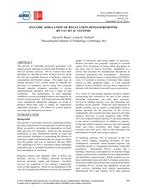Description
The growth of renewable electricity generation will require greater amounts of electric grid flexibility in the form of ancillary services. HVAC systems have been identified as a possible provider of these services, citing the link they establish between a building’s electricity consumption and thermal storage. This paper uses an acausal dynamic VAV system model to simulate the provision of regulation service using four common demand response strategies operating at various implementation intensities and over a range of load conditions. The performance of each operating condition is scored according to metrics developed by an electric system operator. Duct static pressure and chilled water temperature adjustment strategies are found to perform better than zone or supply air temperature adjustment strategies. The effects of system capacity and ramp-rate limitations are shown.
Citation: ASHRAE/IBPSA-USA Bldg Simulation Conf, Atlanta, GA, Sept 2014
Product Details
- Published:
- 2014
- Number of Pages:
- 8
- File Size:
- 1 file , 3.5 MB
- Product Code(s):
- D-BSC14-51




